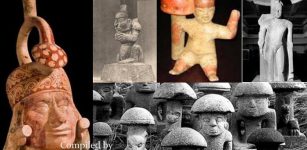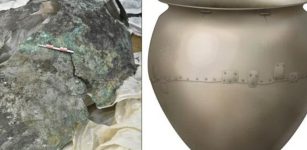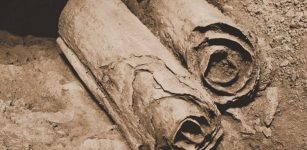Chilean Mummies Clad In Red Poison Dresses – Evidence Of A Unique Inca Ritual
AncientPages.com - Scientists have studied two Chilean female mummies clad in red poison dresses.
The females aged 9 and 18 years died about 500 or 600 years ago and were buried according to Inca customs. Inside their graves, archaeologists found precious goods, but their deadly clothes containing toxic pigment are puzzling. Their dresses contain cinnabar, a highly toxic mineral that comes from mercury ore. Were the two young women victims of capacocha, or Qhapaq Hucha, ritual sacrifice?
Credit: Museo Regional de Iquique
According to researchers at the University of Tarapacá in Chile, the remains offer evidence of “a special lower-elevation capacocha burial, most probably undertaken to politically and symbolically incorporate the coastal people into the Tawantinsuyo Empire.”
The new chemical analyses that we obtained showed that cinnabar was present in the clothes of the Cerro Esmeralda mummies," the researchers wrote in their paper.
"This toxic material is a special and foreign funerary offering in northern Chile."
In their study, researchers write that “the use of cinnabar has been wide ly reported at archaeological sites in various parts of the world. For example, in the Old World, its use has been reported in Roman architecture and art and also in human remains and artefacts from the Neolithic/Chalcolithic (5400–4100 BP) period of the Iberian Peninsula.”
Although there is evidence that the Inca culture was familiar with cinnabar, researchers have never found any traces of the deadly powder in the region before. The Huancavelica mine north of Lima, is one site where cinnabar was found, but it’s far away from the burial place of these two Chilean mummies.
See also:
Mystery Of The Chinchorro Civilization And The World’s Oldest Mummies
Study Traces DNA Of Inca Emperors To Their Modern-Day Descendants
Secrets Of Quipu – Ancient Inca Message Decoded By Student
"The Incas - and, in general, all the societies that supplied themselves with cinnabar from Huancavelica - always used this mineral in prestigious and elite social contexts," researchers write in their study.
The Chilean mummies covered in this deadly powder were first discovered in the 1970s, but at the time it was unknown why the girls were dressed in fabric tinted red with cinnabar.
A new analysis shed more light on this ancient mystery. Everything now indicates the young girls were sacrificed. “During Inca times, the provinces of the Tawantinsuyo were socially and politically linked to the capital, Cusco, through capacocha rituals that took place on Andean mountains,” researchers concluded.
Researchers have discovered a unique Inca ritual, but working at the site is dangerous and precautions must be made when dealing with this red deadly pigment.
AncientPages.com





















